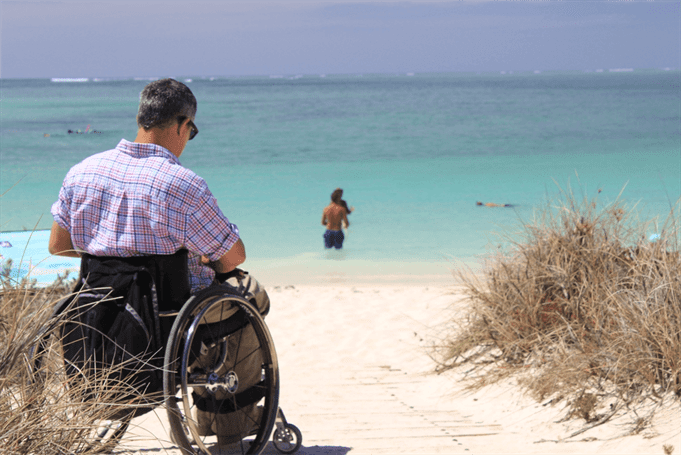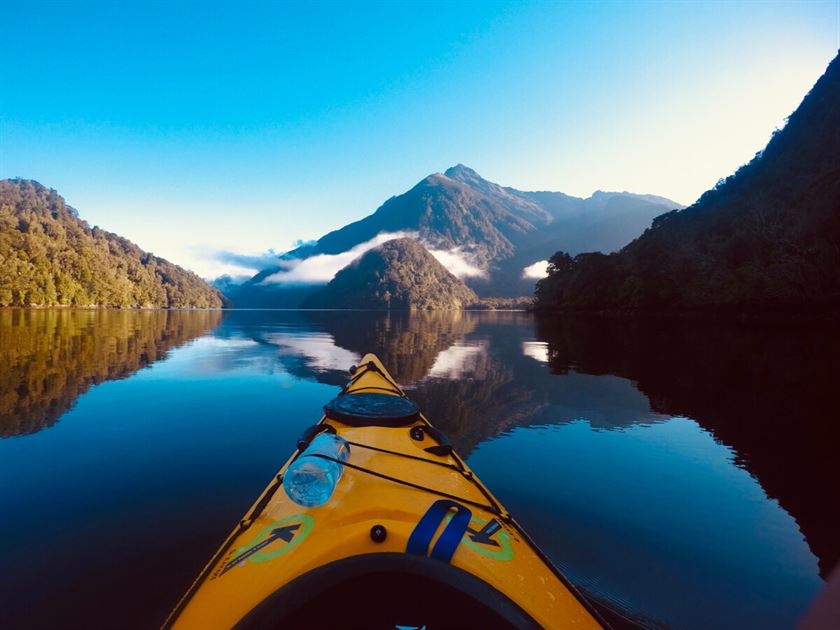The Best Programs for Cruising with a Disability

Delicious dinners, fresh sea air, exploring the ports of exotic new places…cruises are popular for good reason: They have a lot to offer!
We believe everyone should get a chance to experience every aspect of a cruise that makes it such a memorable experience. And that means making sure there are the right procedures and amenities in place to make the experiences more accessible for people of all ages and needs.
We aren’t alone in this belief. That’s why both cruise companies and independent mobility equipment rental companies alike have been on a mission to make cruise experiences more inclusive to people who experience disabilities and their families.
Check out our round-up of some of the accessibility programs that are changing the face of the travel industry and making cruise experiences safe and enjoyable for all.
Accessible Shore Excursions: MSC Cruises
MSC cruises hosts cruises around the world, with most ships departing from Miami, Florida.
Their new Accessible Shore Excursions program is helping to ensure that everyone on board their ship has plenty of mobility options to allow for easy, stress-free exploration.
The best part is that these accessibility changes came just in time for MSC’s expansion to 5 more winter ports and 3 more summer ports, allowing for cruises through 20 new destinations around the Caribbean and Mediterranean.
Every Accessible Shore Excursion promises:
- Short distances
- Access to wheelchairs wherever they can be navigated
- Step-free tour routes
- Wheelchair accessible restrooms
- A slower pace than other tours
- Small groups for a more exclusive experience
While solo trips can be a blast, these excursions can be enjoyed with family and friends, too! They’re welcome to join you.
Kulture City: Carnival Cruise Lines
Varied abilities and needs don’t just show up physically. Many people need somewhere that feels safe for them in other ways.
For about 1 in every 6 people diagnosed with a Sensory Processing Disorder (SPD), autism, or ADHD, that means needing to have experiences curated in a way that limits the chances of sensory overload.
Both Sensory Processing Disorder and autism can cause a sensory overload in many cruise environments. Concerts, for example, can have enough lights, sounds and people to cause someone with one of these sensory processing issues to experience serious overwhelm or even distress.
Needless to say, certain environments and entertainment venues on a cruise ship can be stressful for some. But thanks to places like Kulture City, everyone can be entertained, regardless of their sensory processing.
Kulture City was cofounded by Dr. Julian Maha. Dr. Maha was keenly aware of the exclusion that can occur for sensory sensitive people, and sought out to change that by bringing awareness and resources to other companies.
Since its founding, Kulture City has partnered with many companies, including Carnival Cruises, to offer training and tools for staff to better accommodate the needs of the sensory sensitive.
In addition to this training, Carnival Cruises will be the first cruise line to require staff to complete a special needs certification program.
As part of their training and services, Carnival also offers eligible cruisers a sensory tool bag of sorts that includes noise-canceling headphones, a lanyard to alert staff of any sensory issues, fidget toys, and a feeling thermometer to help express emotion when it’s otherwise difficult.
Special Needs at Sea: Various Cruise Lines
Some cruise lines might offer accessible excursions, but what if you need full mobility to get around the ship?
Special Needs at Sea is an independent equipment rental company that provides on-board mobility tools like scooters and wheelchairs. They also provide other necessary health items such as oxygen tanks, hospital beds, lift chairs, and even cribs for the little ones!
Their cruise specialty is the White Glove Service. With White Glove Service, an ambassador will meet the customer before boarding their ship and help demonstrate the use of the equipment and make sure all questions are answered and concerns put to rest before the journey even begins.
They’ll also meet the customer upon disembarking to help take the equipment off their hands and send them on their way.
Princess Access: Princess Cruises
When it comes to accessibility, Princess Cruises has been ahead of the game for decades.
Their Princess Access program has been around since 1992, and has seen plenty of growth since. As part of this program, they were also the first cruise line to hire a manager of access compliancy.
Their accessibility features are part of the entire cruise experience from getting on board to disembarkment, starting with the ship.
Ship accessibility features include:
- Over 30 wheelchair-accessible cabins
- A wheelchair-accessible ship — including restaurants, theaters, and concert halls
- Accessibility for those with sight issues with braille elevator call buttons and signs as well as auditory arrival announcements
- Accessibility for those with hearing issues like the infrared listening assistance systems in theaters, as well as an all-in-one hearing kit that includes visual smoke detectors, a telephone amplifier, door knock notifications and more.
- Seeing-eye and hearing-assistance dogs
The necessities don’t end there. Princess has you covered offshore, too.
Thanks to their partnership with ports, in many locations they offer features like an accessible trolley ride through St. Thomas Island and private beaches equipped with ramps.
Other Tips for Traveling with a Disability
Planning a cruise can be difficult enough as it is without having to worry about accessibility and inclusion. Here are some tips for cruising with a disability to help ease the process:
Do your research
- Research the cities and ports you’ll be visiting, and take into account things like architecture (Cobblestone roads? Gaps to get off of subways?)
- Pick places with nearby attractions so you can take your time without the stress of a time crunch.
Check if tenders are used
- Tenders are small boats sometimes used to transport guests from the cruise ship to the port.
- Sometimes, these aren’t accessible and those in need of wheelchairs and other mobility devices can get stuck on board.
Consider joining a group
- Look into joining one of many supportive and fun groups for travelers with various disabilities such as the Multiple Sclerosis Foundation’s “At Sea” program.
Let Us Help
At Cloud Blue, we’re familiar with life’s intricacies and the unique needs of every passenger. We’ll prioritize your needs to find you the perfect cruise.
Learn more about how we can help travelers cruising with a disability »
Get Travel Deals Today!


